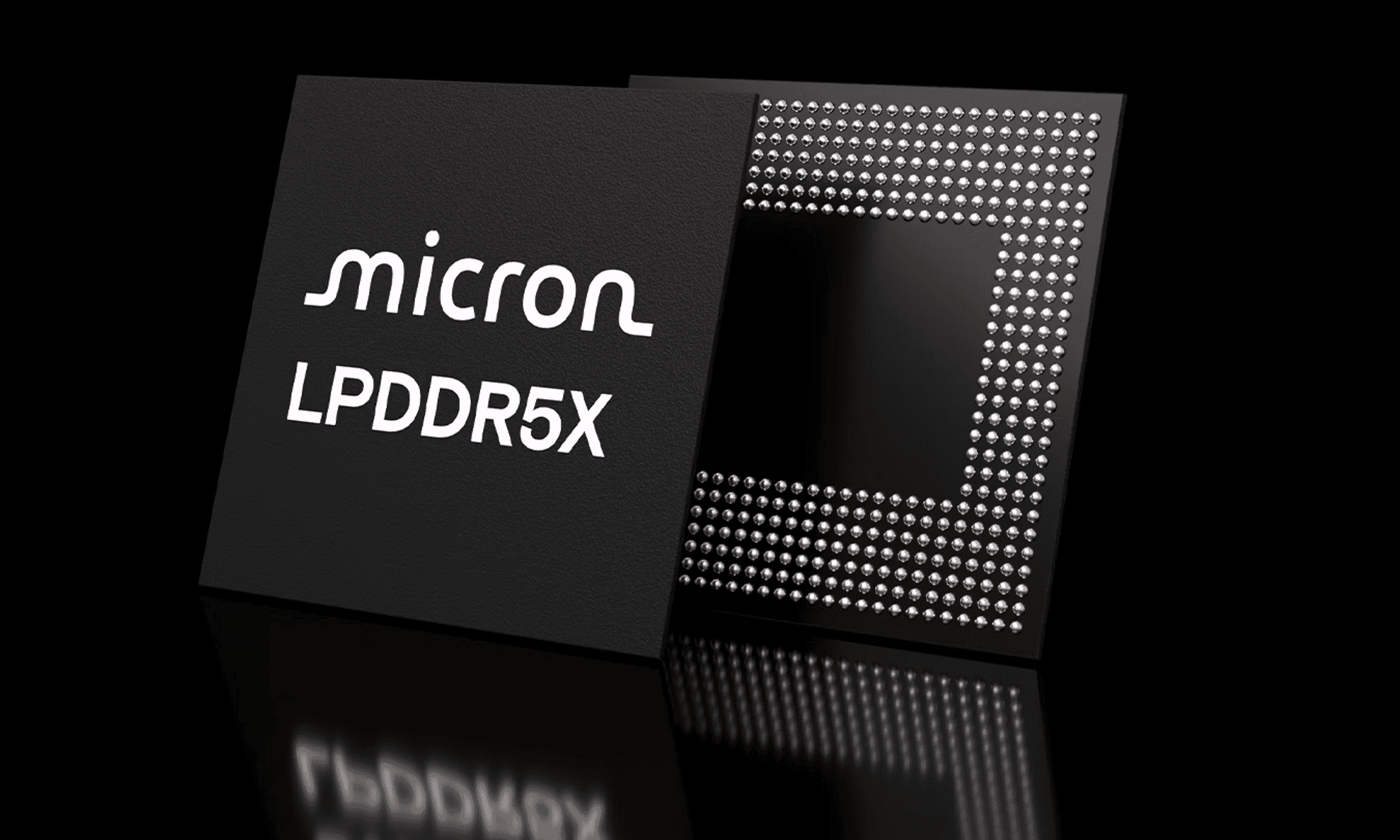Samsung is preparing to launch its Galaxy S25 series in early 2025 and may source LPDDR5 RAM from Micron, marking a significant shift from its traditional reliance on in-house components. This strategic change comes amid challenges within Samsung’s semiconductor division regarding DRAM production.
By opting for Micron’s memory solutions, Samsung aims to enhance performance and cost-effectiveness, while also addressing previous supply issues. This decision reflects intense competition in the DRAM market and could lead to improved device performance for consumers, highlighting the importance of component selection in mobile technology.
Micron Takes Center Stage in Galaxy S25 Memory

The Shift to Micron’s LPDDR5
The Samsung Galaxy S25 series is making a big change in its memory components. Instead of primarily using Samsung’s own LPDDR5 DRAM, the new phones will rely more on Micron’s memory chips. This is a significant shift, as Samsung has often used its own components in its flagship devices. For almost ten years Micron has been a secondary supplier for Samsung mobile DRAM. This change marks the first time that Micron will be the primary supplier.
Why the Change?
Several factors likely contributed to this decision. Some reports suggest that Samsung’s semiconductor division has faced challenges producing its latest mobile DRAM, specifically the 1b DRAM (5th generation 10nm-class DRAM). They had trouble making enough chips. This may have led Samsung’s mobile division to look for other options. The decision was likely based on several things including performance, cost, and availability. It seems Micron’s memory met Samsung’s needs better.
Impact on the Industry
This change has ripples throughout the tech world. It shows how competitive the DRAM market is. It also shows that even big companies like Samsung will choose the best parts for their products, even if it means using components from a competitor. This move also highlights the difficulties Samsung has encountered in its semiconductor division with its cutting-edge mobile DRAM.
Comparing LPDDR Standards
LPDDR stands for Low Power Double Data Rate. It’s a type of memory designed for mobile devices. It uses less power than standard DRAM, which is important for battery life. Here’s a quick comparison of different LPDDR versions:
| Standard | Data Rate (Gbps) | Key Improvements |
|---|---|---|
| LPDDR4 | 3.2 | Lower power, higher bandwidth |
| LPDDR4X | 4.266 | Further power reductions |
| LPDDR5 | 6.4 | Increased speed and efficiency |
| LPDDR5X | 8.533 | Even higher speed and improved reliability |

LPDDR5 offers a significant speed boost over previous generations. This translates to faster app loading, smoother multitasking, and improved overall performance. The latest standard, LPDDR5X improves on LPDDR5 with even greater speed and reliability, though the S25 will use LPDDR5.
What This Means for Users
For users, this change likely means better performance and efficiency in the Galaxy S25. Micron is a well-respected memory manufacturer, and its LPDDR5 DRAM is known for its speed and low power consumption. This switch could help give the new phones an edge over the competition.
The Broader Memory Landscape
Samsung’s decision to use Micron’s LPDDR5 memory in the upcoming Galaxy S25 series reflects significant trends in the memory industry, focusing on faster and more efficient memory to meet the demands of mobile devices, AI, and data centers. This shift shows competition among companies like Micron, Samsung, and SK Hynix, driving innovation and benefiting consumers.
Short Summary:
- The Galaxy S25 series may feature Micron’s LPDDR5 RAM, replacing Samsung’s in-house memory chips.
- Samsung has faced significant issues with manufacturing its 1b DRAM due to yield problems.
- The mobile division’s choice to source externally reflects a growing rift between Samsung’s smartphone and semiconductor units.
Memory, alongside processors and storage, plays a crucial role in smartphone performance, impacting speed and multitasking. The latest UFS standard (UFS 4.0) enhances storage performance, leading to quicker app installs and smoother user experiences. Samsung’s choice to source memory from Micron indicates a strategic pivot amidst supply chain challenges for the leading smartphone manufacturer.
A recent article by ZDNet outlined that Samsung’s struggles stem from its 1b DRAM production, specifically the fifth-generation 10nm-class DRAM intended for the Galaxy S25 series. Recurrent yield issues have reportedly hindered the timely delivery of LPDDR samples to Samsung’s Mobile eXperience (MX) Division, affecting the company’s timeline for the flagship’s release.
The MX Division expressed concerns regarding delays in crucial memory product deliveries, emphasizing that such challenges could affect the overall performance of the Galaxy S25 series.
For context, Samsung’s ambitions surrounding its DRAM production had initially intended the Galaxy S25 series to showcase cutting-edge performance powered by its proprietary memory chips. However, TheElec stated that the mobile division had to pivot due to substantial yield rate setbacks that have kept the production below the critical threshold of 80%—a threshold necessary for effective mass manufacturing of semiconductors.
Industry analysts have pointed out that while Samsung has made strides in developing its 1b DRAM, the inability to produce the necessary quantities may have forced the hand of its mobile division. Micron’s memory chips, which have showcased better thermal efficiency and reliability, now seem to present a preferable alternative, especially as the AI-driven market demands heightened performance.
“Samsung’s decision to choose Micron over its own semiconductor arm marks a shift in their operational strategy,” noted a senior industry analyst, elaborating that in addition to performance, pricing also played a crucial role in Samsung’s choice. “Micron’s offerings appear to have outperformed Samsung’s options across multiple criteria.”
As highlighted by Wccftech, this transition signals a possible rift between the powerful semiconductor and smartphone divisions within Samsung. Allegations surfaced regarding internal disputes where TM Roh, the mobile division’s chief, expressed dissatisfaction over the escalating costs imposed by the semiconductor unit, further complicating the dynamics of the corporate structure.
“It seems that Samsung’s mobile division may seek to increase their procurement from external suppliers like Micron for better price negotiation in the future,” an industry insider noted.
With the Galaxy S25 series still on track for an official announcement on January 22, 2025, speculation continues regarding the processor and overall configuration of the devices. While earlier buzz indicated an all-Snapdragon lineup led by Qualcomm’s Snapdragon 8 Gen 4 processor, new reports suggest that the upcoming Galaxy S25 might still incorporate Samsung’s Exynos processor for market differentiation.
According to recent statements, the Galaxy S25 and S25 Plus models could leverage the Exynos 2500, although Qualcomm’s Snapdragon 8 Gen 4 is expected to remain the chip of choice for the Galaxy S25 Ultra. The dual-processor strategy that characterized earlier iterations appears to be under review amid production uncertainties.
“Samsung’s ability to adequately produce the Exynos 2500 has come into question due to reported challenges tied to their 3nm process,” noted an insider, “therefore, reliance on Qualcomm might be more feasible for ensuring better performance in flagship units.”
The complexities surrounding these processing decisions extend further when considering regional market strategies. In past device launches, Samsung has employed different chip configurations for various regions, which raises questions about how they will tackle availability issues moving forward. For instance, the previous S24 series separated markets between Snapdragon and alternative processors, which has become a contentious topic among tech enthusiasts worldwide.
Samsung’s perceived vulnerabilities have also drawn heightened scrutiny amidst increasing competition. Notably, Micron, previously relegated to a secondary supplier role for years, is now emerging as a formidable contender within the smartphone memory market. The company’s advancements in DRAM technology provide it an edge over Samsung in certain applications.
According to various reports, Micron’s transition to a leading supplier for the Galaxy S25 raises questions regarding Samsung’s memory research and development strategies. Recognized globally as the top vendor for memory chips, the company is in danger of losing its edge as competitors innovate rapidly in both high-bandwidth memory (HBM) and low-power DRAM segments.
“Micron’s enhancements in the 10nm memory technologies appear superior to Samsung’s current offerings, particularly in high-performance categories which are critical in the AI era,” noted another analyst.
The evaluation of the supplier selection process for the Galaxy S25 series indicates that Samsung is gradually acknowledging the technological advancements demonstrated by Micron. As global technological demands escalate, it appears that Samsung’s traditional strengths are being challenged.
As Samsung navigates through these complexities, certain analysts remain hopeful about the company’s long-term strategies regarding its semiconductor division and its branding as a tech pioneer. The transition to Micron as a primary supplier represents not just a significant shift in operational dynamics but also a potential learning opportunity for the Samsung semiconductor arm to address and rectify ongoing yield issues.







